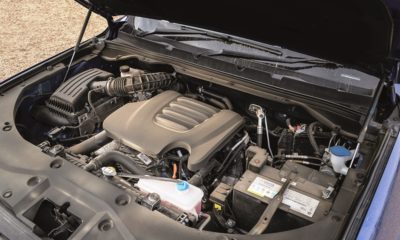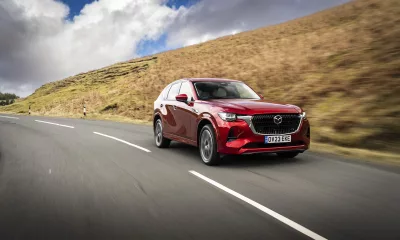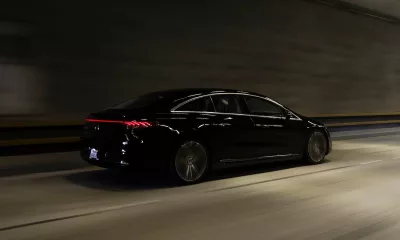Following an exhaustive series of votes, tests and winner-takes-all challenges – 10 double cabs in the hands of 10 experts, in a game of turbodiesel top trumps – who will walk away with the accolade of South Africa’s best double-cab bakkie? The next 29 pages will reveal all …
Our go-to bakkie expert
With decades of invaluable off-roading experience, Gerhard Groenewald, the owner of Klipbokkop Mountain Reserve and a legend in 4x4ing circles, is our off-road expert. He’s also the mastermind behind some of the more stringent tests you’re going to read about …
- Ford Ranger 2,0 SiT 4×4 XLT FX4 10 AT

Price: R712 300
Power: 132 kW @ 3 500 r/min
Torque: 420 N.m @ 1 750 r/min
What Gerhard says:
“Over the years, the Ford has developed into a hugely comfortable and capable vehicle, with an almost perfect power-to-weight ratio in this 2,0 SiT.”
Eagle-eyed readers may have spotted a definite numerical motif attached to the Ranger’s inclusion in this year’s Bakkie Shootout. Enjoying its tenth year on the SA market and possessed of Ford’s latest 10-speed transmission, it joins CAR’s biggest double-cab comparative test to date as one of 10 such models currently available locally.
Most poignant of all, however, is that the single-turbo 4×4 XLT FX4 featured here was also our pick of an extensive Ranger litter that’s netted the Top 12 Best Buys award for … you guessed it … the tenth consecutive year.

We’re big fans of the Ranger – something that’s garnered agreement and criticism in equal measure from the public on many occasions – but we feel the praise is justified when looking at just how well resolved a product Ford’s double-cab is. While it may not possess the biturbo’s outright low-end grunt, the single-blower is still a gutsy and (by double-cab standards) refined unit, thanks to the added flexibility its smooth 10-speed auto ‘box affords. In both the Ranger and Amarok’s cases, the term “car-like’ has been wheeled out almost ad nauseum. However, from the solidly constructed and ergonomically well-thought-out cabin to on-road handling and ride characteristics that have rightly seen it draw comparisons with some SUVs, it’s nonetheless fitting. In addition to such features as the intuitive SYNC3 infotainment system, dual-zone climate control and keyless ignition and access, this model’s FX4 designation ushers in model-specific badging and seat details, as well as black finishes for the 18-inch alloy wheels, grille and numerous other exterior fixtures.
With its replacement slated for 2022, this will be the T6 Ranger’s last chance to shine although some strong contenders are looking to knock the accomplished Ford off its perch before its time is up in our market.
- GWM P-Series 2,0 TD LT 4×4 AT

Price: R554 990
Power: 120 kW @ 3 600 r/min
Torque: 400 N.m @ 1 500 r/min
Expert comment
What Gerhard says:
“Impressive tech for the money but too much focus on bells, whistles and gadgets for my liking. It feels like it needs more R&D.”
Although our Bakkie Shootout encompasses some well-established and widely trusted stalwarts in the double-cab segment, it’s often the lesser-known newcomers that attract the most attention from the public and GWM’s P-Series has certainly caused quite the stir since its recent arrival on our market.
The Chinese carmaker has made significant strides since it touched down here just over 10 years ago. From the heavily derivative and somewhat primitive original pick-up through to its workmanlike Steed 5 and more luxurious Steed 6, the progression to the P has seen marked improvements in everything from perceived quality through to powertrain; and in the P’s case, a wealth of active safety systems such as adaptive cruise control with automated braking, lane departure control and rear cross-traffic alert, to name a few.

All of this tech is wrapped up in a package with a visually imposing frame that incorporates a decidedly American truck-inspired nose and generous proportions akin to those of the Ranger and Amaro. No doubt this contributes to the appeal that sees so many examples on our roads. Thankfully, the P’s talents lie beyond lantern-jawed looks and a plush, well-equipped cabin. On-road, the P impresses with its refinement and barring some unusual heft to the steering around dead-centre at motorway speeds (setting dependent), it serves up a driving experience up there with the best of them. Power is provided by an in-house-developed GW4D20M inline-four 2,0-litre turbodiesel unit mated to the proven eight-speed ZF 8HP torque-converter transmission, developing a segment-competitive 120 kW and 400 N.m of torque.
Perhaps the P’s most attention-grabbing figure is its R554 900 sticker price, undercutting all but three of its rivals here. So, the looks, luxury, tech and road manners bases are covered, yet, will that sheen survive the tougher tests our Shootout has in store?
- Isuzu D-Max 250 TD 4×4 X-Rider MT

Price: R576 600
Power: 100 kW @ 3 400 r/min
Torque: 320 N.m @ 1 800 r/min
What Gerhard says:
“Underpowered, old school, but a solid, reliable bakkie with a proven track record in Africa. You could do a lot worse.”
Some bakkies are more bakkie than others and in the Isuzu’s case, that’s not a redundant tautology. From the offset, the D-Max, nay KB’s, forte has never been lifestyle-orientated transport but rather a hard-as-nails workhorse that favours ruggedness and durability over comfort. Although times have changed and with it, the role of the pick-up has moved from farmhand to family conveyance; a transition that’s seen its rivals’ proportions – especially in terms of cabin space and overall road manners – improve markedly.
It has to be said that while the X-Rider’s styling addenda has gone some way to ushering it towards the attention of the lifestyle brigade, some D-Max peculiarities remain.

This midfield double-cab’s 2,5-litre 4JK1-TCX turbodiesel has been a part of Isuzu’s powertrain portfolio for many years. Its agricultural soundtrack, long-throw manual gearshift and modest outputs may date it in this company, yet, it is durable and widely trusted by bakkie aficionados. The same can be said of its ladder chassis underpinnings that have traditionally been tooled more towards load-lugging than luxury. Even the latest i-GRIP (Isuzu Gravity Responsive Intelligent Platform) majors in structural rigidity, with enhanced materials and rear cross-bracing that contribute to a 42% improvement in torsional rigidity … and a ride that often sets the cab quivering on rippled tarmac.
While the D-Max will no doubt have its work cut out in the everyday liveability stakes, the Japanese stalwart will be gleefully rubbing its hands at the prospect of the tougher off-road and load-bearing tests our Shootout will present. Its old-school durability could well see it standing strong over its comparatively softer rivals when the dust clears. Given that its successor shares much of its mechanical underpinnings with the BT-50 against which it’s lined up here, it will be interesting to see just how well this seasoned campaigner will acquit itself against a successor of sorts.


















